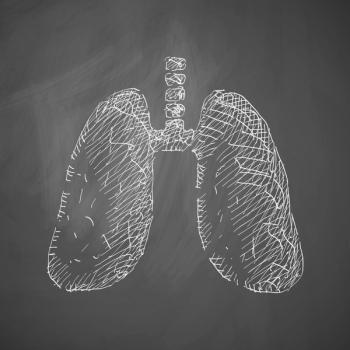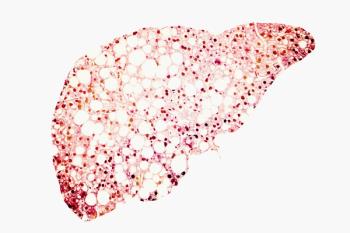
Lung cancer is the number one cause of cancer-related deaths among women in the United States, yet relatively little research funding is spent on the issue, the authors of a new study say.
Jared is a freelance writer for The American Journal of Managed Care® (AJMC®), and previously worked as a senior editor for HCPLive® at MJH Life Sciences®.
He has an MA from University of Sioux Falls. You can connect with Jared on LinkedIn.

Lung cancer is the number one cause of cancer-related deaths among women in the United States, yet relatively little research funding is spent on the issue, the authors of a new study say.

This new report also shows the value of national databases tracking the use of ventilation support.

A new report has found continuous glucose monitoring (CGM) may help reduce staff burden in the intensive care unit (ICU) by reducing the need for blood gas monitoring.

The new data suggest risdiplam can be a viable option for people with spinal muscular atrophy who cannot take or tolerate the 2 other approved disease-modifying therapies.

A new report underscores how treatment decisions for non-small cell lung cancer (NSCLC) affect patients’ health care utilization and costs.

Colombia and Brazil had the highest prevalence and incidence of systemic lupus erythematosus (SLE), a new investigation found.

A new report found interesting links between genetic factors associated with COVID-19 severity and autoimmune disease among persons who have systemic lupus erythematosus (SLE).

Existing evidence suggests genetics, environmental factors, and exposure to specific chemicals—such as those in cigarettes—can all increase a person’s risk of systemic lupus erythematosus.

It is unclear what role treatment plays in affecting hepatocellular carcinoma (HCC) risk, the authors found.

These new study data are based on 20 years of follow-up in 92 Chinese children with lupus nephritis.

Intrahepatic and perihilar cholangiocarcinoma, in particular, grew faster in young patients than in older patients.

It is not yet clear what continuous glucose monitoring metrics should be used for a diabetes diagnosis in people with cystic fibrosis.

Blacks and Hispanics with systemic lupus erythematosus (SLE) are more than twice as likely to have severe outcomes from COVID-19 compared with White patients with SLE, a new study has found.

The index for eosinophilic esophagitis (EoE) was crafted based on a literature review by a multidisciplinary team of experts.

Data suggest incidence and prevalence of systemic lupus erythematosus (SLE) vary widely among regions, although the authors noted some regions have been studied more extensively than others.

A new report consolidates existing research on hilar cholangiocarcinoma resection, but finds more work is needed to better evaluate the efficacy of robotic surgery in these patients.

The report found people using continuous monitoring systems spent more time in their target glucose ranges.

Only about 10 cases of hypoparathyroidism related to systemic lupus erythematosus (SLE) have been reported, according to researchers who recently described such a case.

A new report finds inflammation scores can predict outcomes among patients receiving immunotherapy for intrahepatic cholangiocarcinoma (ICC).

However, the researchers said their findings should not be interpreted as completely refuting the possibility that hydroxychloroquine might be a useful tool in preventing or slowing the development of systemic lupus erythematosus (SLE).

Risk for individual hepatobiliary cancers varies from comorbidity to comorbidity, researchers found.

The study found that combined therapeutic strategies may help lower the risk.

Among the challenges are a lack of reliable biomarkers and resistance in some patients who have squamous cell carcinoma (SCC).

The question of whether bone erosion is a feature of Jaccoud arthropathy has remained controversial among persons who have systemic lupus erythematosus (SLE).

The survey of European hepatologists demonstrates the lack of clarity in guidelines.

Molecular differences may help explain geographic gaps in outcomes.

The research shows a disease-specific quality-of-life (QOL) tool is more sensitive than a generic version.

A new report finds despite reforms to the country’s health care system, many patients in China with lung cancer experience stress, and sometimes health consequences, on account of the disease’s financial burden.

Leptin merely correlated with body mass index, the study found.

The study could provide an important baseline of what the disease looked like before the advent of disease-modifying therapies.

259 Prospect Plains Rd, Bldg H
Cranbury, NJ 08512
© 2025 MJH Life Sciences®
All rights reserved.
